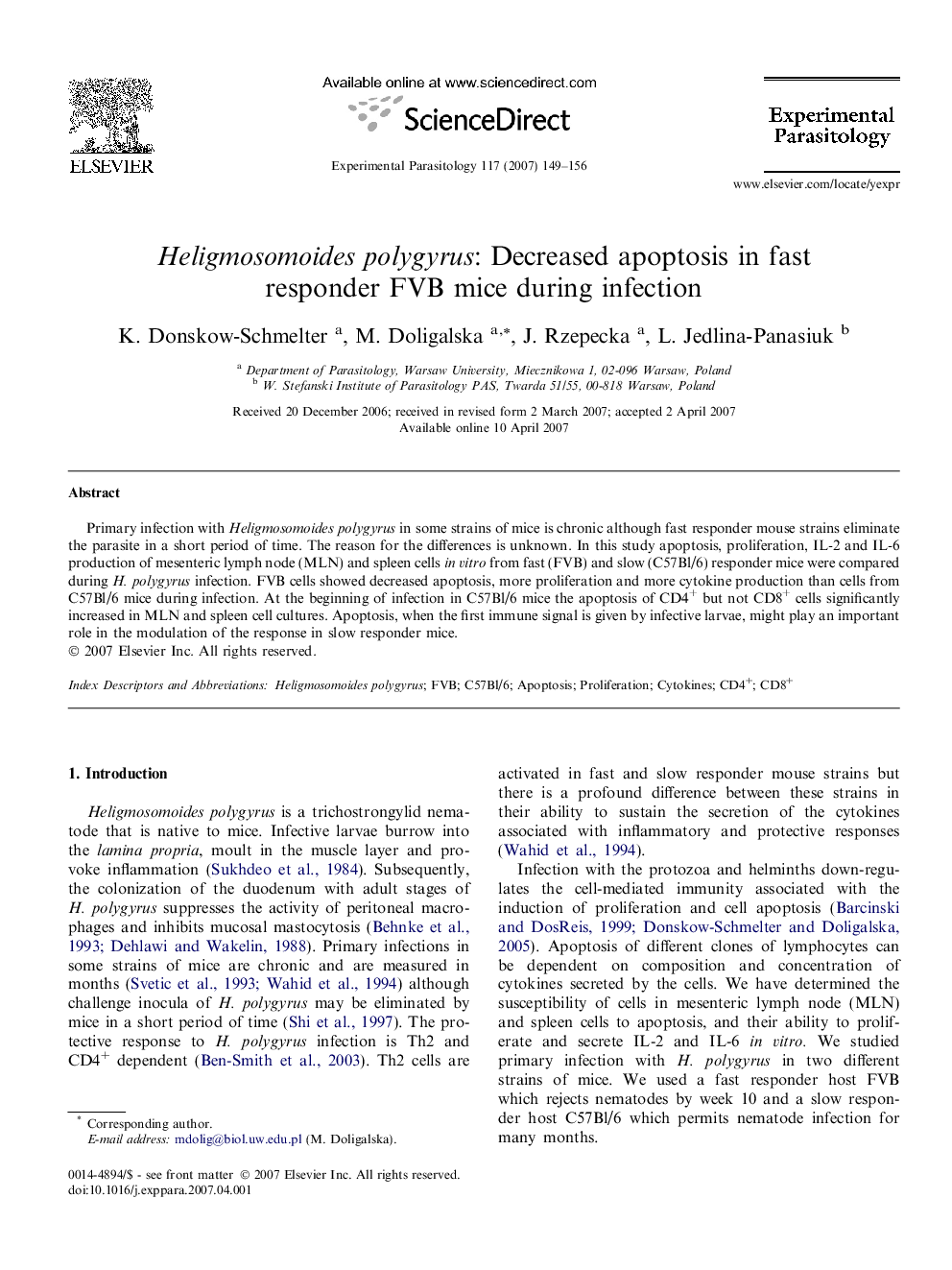| Article ID | Journal | Published Year | Pages | File Type |
|---|---|---|---|---|
| 4371811 | Experimental Parasitology | 2007 | 8 Pages |
Abstract
Primary infection with Heligmosomoides polygyrus in some strains of mice is chronic although fast responder mouse strains eliminate the parasite in a short period of time. The reason for the differences is unknown. In this study apoptosis, proliferation, IL-2 and IL-6 production of mesenteric lymph node (MLN) and spleen cells in vitro from fast (FVB) and slow (C57Bl/6) responder mice were compared during H. polygyrus infection. FVB cells showed decreased apoptosis, more proliferation and more cytokine production than cells from C57Bl/6 mice during infection. At the beginning of infection in C57Bl/6 mice the apoptosis of CD4+ but not CD8+ cells significantly increased in MLN and spleen cell cultures. Apoptosis, when the first immune signal is given by infective larvae, might play an important role in the modulation of the response in slow responder mice.
Related Topics
Life Sciences
Immunology and Microbiology
Parasitology
Authors
K. Donskow-Schmelter, M. Doligalska, J. Rzepecka, L. Jedlina-Panasiuk,
